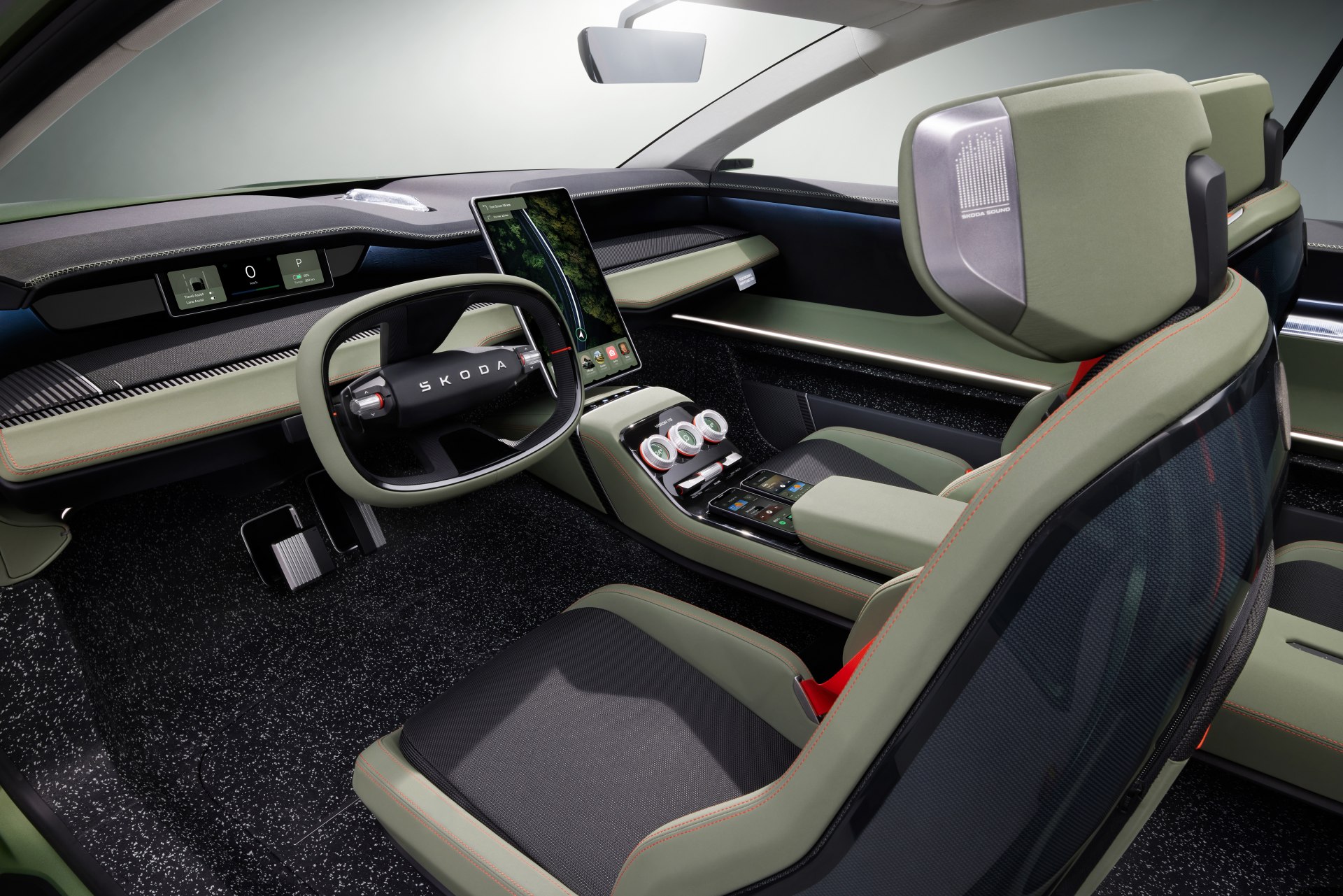New interior elements
“Mono-materials”, i.e. parts consisting of just one material, are the easiest and most efficient to recycle. They are used, for example, in interior linings, air ducts or as copper conductors in cable harnesses. These recycled materials are used in seat covers or carpets, for example. Due to the high technical requirements, most parts of a new car today are made from composite materials. An example is the door trim in the Octavia - half of the composite material is made from renewable raw materials.
 Models from the Enyaq iV electric family offer the largest quantity of “green" materials in their interiors.
Models from the Enyaq iV electric family offer the largest quantity of “green" materials in their interiors.
One traditional material for the lining of various interior elements is animal skin. This too can be treated involving sustainable practices. Škoda uses olive leaf extract for tanning the leather for the Enyaq iV model range. Depending on the model, the leather can be found either exclusively on the centre part of the seat, or also on the steering wheel and gear lever and handbrake handle.
Otherwise, interior designers are increasingly turning to textile upholstery where leather is typically used, such as on the dashboard. Fabrics made from up to 85 per cent recycled PET bottles and 15 per cent natural wool are already available for the Enyaq iV and Karoq model ranges. These are processed into yarn after recycling. For the Lodge interior seat covers in the Enyaq iV model range, these yarns are combined with natural staple wool.
 Production of environmentally friendly woven fabrics for Škoda cars.
Production of environmentally friendly woven fabrics for Škoda cars.
In addition, Škoda is working to develop sustainable materials with natural components that will also be used in mass production in the future. These include, for example, fibres made from sugar beet, which are a by-product of the sugar factory in Dobrovice near the Mladá Boleslav plant. Sugar beet fibres are used to produce filler for plastic parts. Engineers can also make use of sugar beet pulp: it is dyed using a special process to create design accents in the interior. But the future also belongs to the fibres of silvergrass (Miscanthus), for example, and experiments are also being made with rice husks and hemp, cork and coconut fibres.




 The Škoda Enyaq iV is just the start of Škoda’s electric car line.
The Škoda Enyaq iV is just the start of Škoda’s electric car line.






















